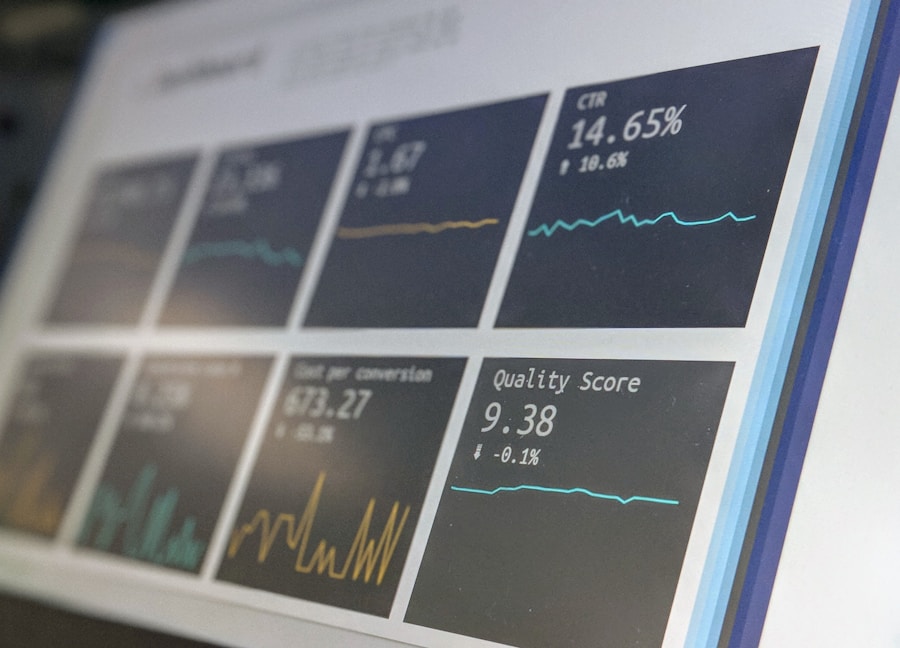
Crunching the Numbers: How Backup Service Analytics Can Revolutionize Your Data Management
Backup service analytics is a crucial component of data management and protection. It involves the use of advanced tools and technologies to analyze and monitor backup processes, data storage, and recovery operations. By leveraging backup service analytics, organizations can gain valuable insights into their data protection strategies, identify potential risks and vulnerabilities, and optimize their backup and recovery processes.
Backup service analytics involves the collection, processing, and analysis of data related to backup operations, including backup success rates, data transfer speeds, storage utilization, and recovery times. This data is then used to generate reports, dashboards, and visualizations that provide a comprehensive view of the organization’s backup environment. By understanding the performance and efficiency of their backup processes, organizations can make informed decisions to improve data protection and ensure business continuity.
The Benefits of Backup Service Analytics
There are several benefits to implementing backup service analytics in an organization. Firstly, it provides visibility into the backup environment, allowing organizations to monitor the performance of their backup processes and identify any issues or bottlenecks that may impact data protection. This visibility enables organizations to proactively address potential problems and ensure that their data is adequately protected.
Additionally, backup service analytics can help organizations optimize their backup and recovery processes. By analyzing backup success rates, data transfer speeds, and storage utilization, organizations can identify opportunities to improve efficiency and reduce costs. This can lead to faster backup and recovery times, lower storage costs, and improved overall data management.
Furthermore, backup service analytics can help organizations ensure compliance with data protection regulations and industry standards. By monitoring backup processes and generating reports on data protection activities, organizations can demonstrate their commitment to protecting sensitive information and meeting regulatory requirements.
How Backup Service Analytics Can Improve Data Management
Backup service analytics plays a critical role in improving data management within an organization. By providing insights into backup processes and data protection activities, organizations can make informed decisions to enhance their overall data management strategies.
One way in which backup service analytics improves data management is by enabling organizations to identify and address potential risks and vulnerabilities in their backup environment. By analyzing backup success rates, storage utilization, and recovery times, organizations can pinpoint areas of weakness and take proactive measures to mitigate potential data loss or downtime.
Additionally, backup service analytics can help organizations optimize their data storage and retention strategies. By analyzing storage utilization and backup frequency, organizations can identify opportunities to reduce storage costs and improve the efficiency of their data management practices. This can lead to better resource allocation and improved overall data management.
Furthermore, backup service analytics can help organizations ensure the integrity and availability of their data. By monitoring backup processes and generating reports on data protection activities, organizations can verify that their data is adequately protected and available for recovery in the event of a disaster or data loss.
Implementing Backup Service Analytics in Your Organization
Implementing backup service analytics in an organization requires careful planning and consideration. To successfully leverage backup service analytics, organizations should follow a structured approach that includes the following key steps:
1. Assessing current backup processes: Before implementing backup service analytics, organizations should conduct a thorough assessment of their current backup processes and data protection activities. This assessment should include an analysis of backup success rates, data transfer speeds, storage utilization, and recovery times.
2. Selecting the right tools and technologies: Once the current backup processes have been assessed, organizations should select the appropriate tools and technologies for implementing backup service analytics. This may include investing in backup monitoring software, data visualization tools, and predictive analytics solutions.
3. Defining key performance indicators: To effectively measure the performance of their backup processes, organizations should define key performance indicators (KPIs) that align with their data protection goals. These KPIs may include backup success rates, recovery times, and storage utilization metrics.
4. Training staff: Implementing backup service analytics requires training staff on how to use the new tools and technologies effectively. This may involve providing training sessions or workshops to ensure that employees understand how to leverage backup service analytics to improve data management.
5. Monitoring and optimizing: Once backup service analytics has been implemented, organizations should continuously monitor and optimize their backup processes based on the insights gained from the analytics. This may involve making adjustments to backup schedules, storage allocation, or recovery procedures to improve overall data management.
The Role of Data Visualization in Backup Service Analytics
Data visualization plays a crucial role in backup service analytics by providing a clear and intuitive way to present complex backup-related information. By using visualizations such as charts, graphs, and dashboards, organizations can gain valuable insights into their backup environment and make informed decisions to improve data management.
One of the key benefits of data visualization in backup service analytics is its ability to provide a comprehensive view of the organization’s backup processes. By presenting backup success rates, data transfer speeds, and storage utilization in a visual format, organizations can quickly identify trends, patterns, and anomalies that may impact data protection.
Additionally, data visualization enables organizations to communicate backup-related insights effectively across different levels of the organization. By presenting backup performance metrics in an easy-to-understand format, organizations can ensure that stakeholders have a clear understanding of the state of their data protection activities and can make informed decisions based on this information.
Furthermore, data visualization can help organizations identify opportunities for improvement in their backup processes. By visually representing key performance indicators such as recovery times or storage utilization, organizations can pinpoint areas of inefficiency or risk and take proactive measures to optimize their backup environment.
Leveraging Predictive Analytics for Better Data Management
Predictive analytics plays a critical role in improving data management by enabling organizations to anticipate potential issues or opportunities in their backup environment. By leveraging predictive analytics tools and technologies, organizations can gain valuable insights into future trends and make proactive decisions to enhance their overall data protection strategies.
One way in which predictive analytics improves data management is by enabling organizations to forecast potential risks or vulnerabilities in their backup processes. By analyzing historical backup performance data and identifying patterns or anomalies, organizations can predict potential issues that may impact data protection and take proactive measures to mitigate these risks.
Additionally, predictive analytics can help organizations optimize their resource allocation for data management. By forecasting future storage needs or backup requirements based on historical trends, organizations can ensure that they have the necessary resources in place to support their data protection activities without over-provisioning or under-provisioning.
Furthermore, predictive analytics can help organizations improve their disaster recovery preparedness by identifying potential scenarios or events that may impact data availability. By analyzing historical data protection activities and predicting potential disruptions, organizations can develop proactive strategies to ensure that their data is available for recovery in the event of a disaster or data loss.
Overcoming Challenges in Utilizing Backup Service Analytics
While implementing backup service analytics offers numerous benefits for improving data management, organizations may face several challenges when leveraging these tools and technologies. Some common challenges include:
1. Data complexity: Organizations may struggle with managing the complexity of backup-related data, including large volumes of information from various sources such as servers, databases, and applications.
2. Integration with existing systems: Integrating new backup service analytics tools with existing systems and processes can be challenging for organizations, particularly if they have legacy infrastructure or disparate IT environments.
3. Data privacy and security: Organizations must ensure that sensitive backup-related information is adequately protected when implementing backup service analytics to comply with privacy regulations and industry standards.
To overcome these challenges, organizations should consider investing in advanced backup service analytics solutions that offer robust capabilities for managing complex data environments, seamless integration with existing systems, and strong security features to protect sensitive information. Additionally, organizations should provide comprehensive training for staff on how to effectively use these tools and technologies to maximize the benefits of backup service analytics for improving data management.
In conclusion, implementing backup service analytics is essential for organizations looking to improve their overall data management strategies. By leveraging advanced tools and technologies for analyzing backup processes, organizations can gain valuable insights into their data protection activities, optimize their resource allocation for storage and recovery, and proactively address potential risks or vulnerabilities in their backup environment. While there are challenges associated with implementing backup service analytics, organizations can overcome these obstacles by investing in advanced solutions that offer robust capabilities for managing complex data environments and providing comprehensive training for staff on how to effectively use these tools and technologies. Ultimately, by embracing backup service analytics, organizations can ensure the integrity and availability of their data while optimizing their overall data management practices for long-term success.


